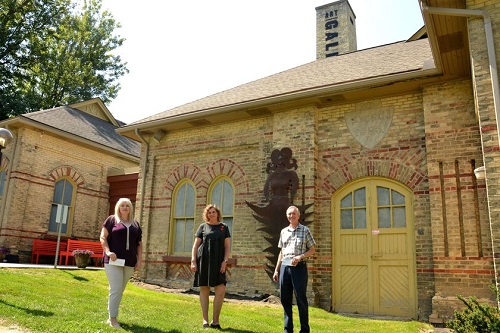 Sunday, September 29, 2024
Sunday, September 29, 2024  Sunday, September 29, 2024
Sunday, September 29, 2024 
To help preserve a piece of Stratford history, both the Architectural Conservancy of Ontario Stratford-Perth and the Stratford and District Historical Society recently donated $2,500 and $200 respectively to help save the aging, 140-year-old Gallery Stratford building from falling into further disrepair.
After learning Gallery Stratford’s board of directors had been unsuccessful in securing an additional $22,000 from the city to match a federal arts and culture grant received prior to the pandemic, the boards of directors for both organizations decided they had an obligation to help in whatever way they could.
“First of all, we want the gallery to survive, but this is one of the most important pieces of architecture in the city. … The architect (George F. Durand) is the same architect who designed the courthouse, the jail, and Avon Crest,” said Allan Tye, president of the Stratford-Perth branch of the conservancy.
Carole Hubbard, the chapter’s vice-president, described Durand as “an up-and-coming architect” who died relatively young.
“The buildings that are left (in Stratford and London) are really his legacy,” she said.
Gallery Stratford curator/director Angela Brayham said the building’s older wing also served as the city’s original pump and waterworks – a piece of Stratford’s heritage that made early growth possible.
“Without the pump house, Stratford wouldn’t be what it is today, so it’s very important. We wouldn’t have had the city, we wouldn’t have been able to develop the (CNR) shops, you wouldn’t have had all the manufacturing in town, and you wouldn’t have had people living here,” Brayham said.
“It would have just been another one of those stops along a railroad.”